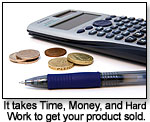 |

Tools:








9 Manufacturers Speak: What It Takes to Bring A Product to Market
 Bringing a new toy or game to market can be incredibly daunting. TDmonthly Magazine talked with manufacturers and asked them what it took, time-wise and money-wise, to get their products on store shelves. Bringing a new toy or game to market can be incredibly daunting. TDmonthly Magazine talked with manufacturers and asked them what it took, time-wise and money-wise, to get their products on store shelves.
Keep an eye out for full-length interviews with many of these companies in future issues of TDmonthly; any previously published interviews are linked to the respondents name.
How long did it take you to go from the original spark of an idea to actual production?
Greg Zima, President, GaZima Games, Inc.: This is a tough question as each game varies. I would say on average it takes about 6 months to get a solid prototype and another 6 to 12 months license it. After licensing it is usually about 12 to 18 months to see the game in stores.
Tom Sebazco, Founder, ENI Puzzle: 5 years.
Leah Sugar, VP of Marketing, Out of the Box Games: It depends on the game, but it can take anywhere from 8 months to several years.
David Schreiber, President, Uncle Skunkle Toys: We were living in Hong Kong, and I had just received the first production sample from my factory. There were some teenagers in the square near where we lived, and I wanted to see if they would like the game… I told them how old I was when I came up with the Idea. One of the boys responded, “how old are you now?” At the time I was 33. He looked at me with a bit of disappointment [and said] “so you are telling me it took you 20 years to bring this to market?”
Gordon Bopp, President, Rock Creek Molding Inc.: 13 years
Wendy Bryan, Creator, I Heart Guts: The idea first started spinning around in my brain in 1999, but the first plush organs didn't come out until 2007.
Michelle Alilovich, VP of Marketing and Creative Development, The Glick Group: Approximately 6 months
Jessie Silbert, Founder, Celestial Buddies: The full process (which is still ongoing – as I write this, my first bulk shipment from the factory is on a boat somewhere in the middle of the Pacific Ocean) has been about two years.
How much money did you need to create the first prototype of your product and come up with a business plan?
Jessie Silbert- Celestial Buddies: I spent about $900 to develop the first four characters – Sun, Moon, Mars and Earth – and create the first prototypes. My background in fashion came in handy when it came to sourcing a factory, putting tech packs together and sourcing fabrics. I also saved a good deal of money by writing my own business plan, creating my own logos and graphics. Once I found a factory, of course, the costs began to rise.
Tom Sebazco, Founder, ENI Puzzle: However much we had on our credit cards :) We operate as much as possible on a cash basis not wanting to accumulate a lot of debt. We don't spend it unless we have it, although my father-in-law did take out an undisclosed sum from his building in Seoul (He operates independently under international Korean Laws as Eni Puzzle Land Co).
Greg Zima, President, GaZima Games, Inc.: My ideas are my products so the cost to produce is more time than financial. Money is spent on attending industry events, prototypes, website, grass roots promotion and other events... when you add in travel, hotel, prototypes, shipping and art I would say expenses run about $10K - 15K a year, if I count my time as free.
David Schreiber, President, Uncle Skunkle Toys: My very first prototype was just a few hundred dollars, but back then it was everything I had. I wrote my business plan as my Masters’ thesis, as such, considering how much my Masters’ degree cost, it was quite expensive. However, I had started the company with virtually no money, and I convinced our factory to build the tooling, then I obtained a licensed contract with Pressman Toy to sell it.
Gordon Bopp, President, Rock Creek Molding Inc.: Around $ 5,000.00
Wendy Bryan, Creator, I Heart Guts: We made the first four organs in small batches, so we plunked down $25,000 for our first order of 6,000 plushes. The manufacturer we were working with at the time created the prototypes for free.
Pat Gesualdo, D.A.D. (Drums and Disabilities): I took about $200.00 to create the first prototype, and go into production. I have been involved in my industry at a major level for many years, so it took a couple hours to develop the entire business plan.
Michelle Alilovich, VP of Marketing and Creative Development, The Glick Group: I simply made modifications to the original "licensed" prototype, so the cost was around $20,000 for the modifications.
 Writer's Bio: Writer's Bio: Justina Huddleston graduated Magna Cum Laude from Emerson College with a BA in Writing, Literature, and Publishing in 2009. After graduating she was the on-site director of the Boston Children's Museum gift store for a year, selling educational, developmental, and creative activity toys that tied in with the museum's exhibits. Justina also interned at children's book publisher Candlewick Press before moving from Boston to Los Angeles, where she is now Editorial Director of TDmonthly Magazine. Read more articles by this author
THIS BANNER IS AN AD:

• • • • • • • • • • • • • • • • • • | • • • • • • • • • • • • • • • • • • |
Back to TDmonthly's front page
|  |
Advertise on TDmonthly

|

